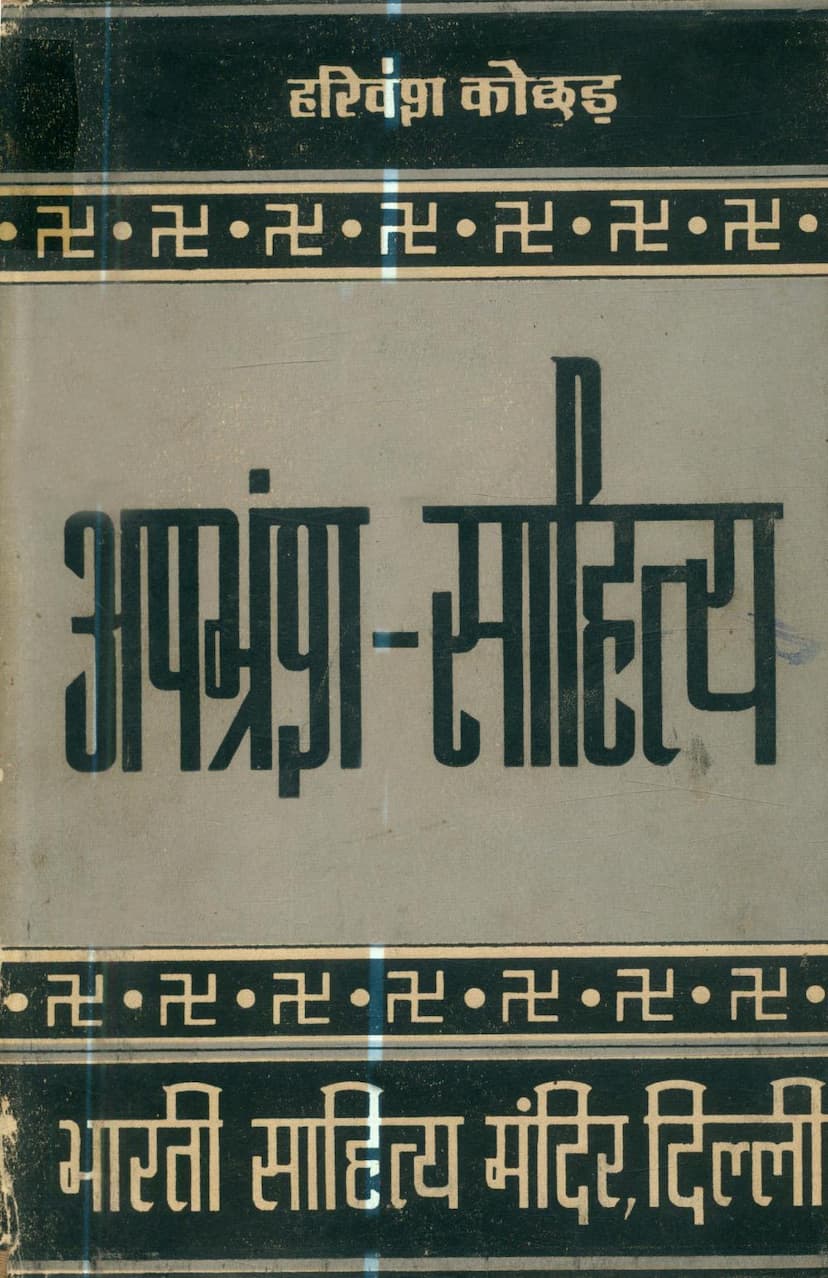Apbhramsa Sahitya
Added to library: September 1, 2025

Summary
This book, "Apabhramsa Sahitya" by Harivansh Kochad, published by Bharti Sahitya Mandir, is a comprehensive scholarly work that delves into the Apabhramsa literary tradition. The book, which was approved as a PhD dissertation by Delhi University, aims to provide a detailed analysis of Apabhramsa language and literature from a literary perspective.
Here's a breakdown of the key aspects covered in the book, based on the provided Table of Contents and introductory pages:
Core Objectives and Scope:
- Focus on Literary Analysis: The book primarily focuses on the literary aspects of Apabhramsa, classifying its various poetic forms like Mahakavya, Khandakavya, and Muktakakavya.
- Historical Context: It attempts to compare Apabhramsa literature with Sanskrit and Prakrit traditions, tracing the influences and independent developments within Apabhramsa.
- Influence on Hindi: A significant aspect of the study is to identify and analyze the influence of Apabhramsa literature on the development of Hindi literature, including its various forms, methodologies, and stylistic elements.
- Comprehensive Coverage: The book is structured into several parts and chapters, covering a wide range of topics related to Apabhramsa literature, from its linguistic development and historical background to its various genres and specific influential works.
Key Themes and Findings:
- Evolution of Apabhramsa: The book traces the evolution of the Apabhramsa language from its earliest mentions in ancient texts like Patanjali's Mahabhashya and its subsequent development and recognition as a literary language.
- Literary Landscape: It provides an introduction to the Apabhramsa literary tradition, highlighting the significant poets and their works, with a special emphasis on Pushpadanta as the foremost poet of the era.
- Genre Classification: The study categorizes Apabhramsa literature into various genres:
- Mahakavya (Epic Poetry): Discusses works like Pushpadanta's Mahapurana and Swyambhu's Paum Chariu.
- Khandakavya (Didactic or Narrative Poetry): Covers religious Khandakavyas related to Jainism (like Nagkumar Charita, Jasahar Charita, Neminath Charita) and Buddhist influences (like the works of Siddhas). It also touches upon secular Khandakavyas.
- Muktakakavya (Lyric Poetry): Includes Jain religious poetry, Buddhist Dohas and songs, and miscellaneous literary works.
- Rupak Kavya (Allegorical Plays): Discusses works that personify abstract concepts.
- Kathatmak Granth (Narrative Texts): Includes stories and tales, often with moral or religious undertones.
- Pady (Stotras/Hymns): Devotional poems.
- Sandhi Granth (Narrative Poetry in Sections): Works structured in sections.
- Influence on Hindi: The book strongly argues that Apabhramsa literature laid the foundation for Hindi literature. It identifies specific influences on Hindi poetry forms, vocabulary, and thematic elements. The continuity of literary traditions from Sanskrit and Prakrit through Apabhramsa to Hindi is a central theme.
- Social and Cultural Context: The author also touches upon the socio-political and religious conditions of the Apabhramsa period, noting the prevalence of Jain and Buddhist literary contributions, and the depiction of societal strata in the literature.
- Linguistic Development: The book also addresses the linguistic evolution of Apabhramsa, noting changes in grammar, phonetics, and vocabulary that paved the way for modern Indo-Aryan languages.
- Key Findings on Apabhramsa Literature:
- Apabhramsa literature broadened the scope of poetic subjects to include not just divine or royal figures but also common people.
- It refined the portrayal of various scenes in narrative poems, offering a humanistic perspective on life.
- The dominant sentiments in Apabhramsa poetry are often Shringar (erotic) and Veer (heroic), leading to a prevalent Nirveda (detachment) or Shanta (peaceful) rasa.
- Apabhramsa literature exhibits three distinct streams: conservative, revolutionary, and mixed.
- The influence of everyday and rural life is evident, particularly in its lyric poetry.
- Apabhramsa poets often used natural imagery and everyday life elements as metaphors and similes.
- Apabhramsa saw the emergence of new metrical patterns and rhetorical devices, some of which influenced Hindi prosody.
- The book highlights the significant contribution of Jain scholars and monks in preserving and creating Apabhramsa literature, often motivated by the need to communicate religious teachings to the general populace.
- Methodology: The author seems to have conducted extensive research, consulting various manuscripts from Jain Bhandaras (libraries) and analyzing the linguistic and literary features of Apabhramsa works.
In essence, "Apabhramsa Sahitya" by Harivansh Kochad is a foundational text for understanding the Apabhramsa literary tradition, its development, its key works, and its crucial role in the genesis and evolution of Hindi literature. It bridges the gap between Prakrit and early Hindi, showcasing Apabhramsa as a vibrant and significant literary language in its own right.